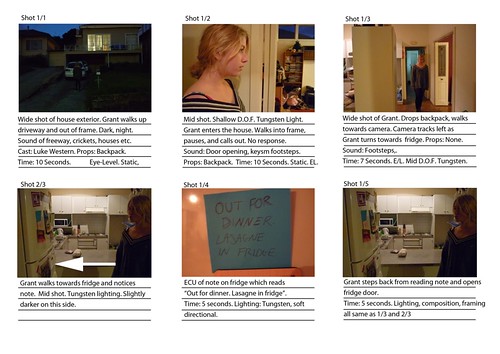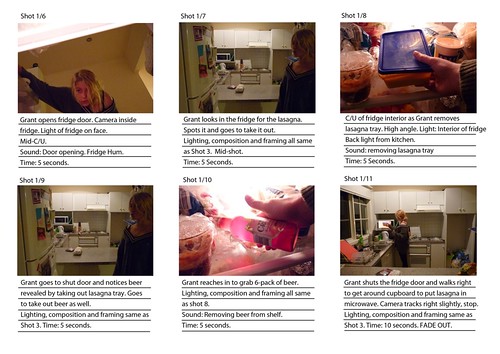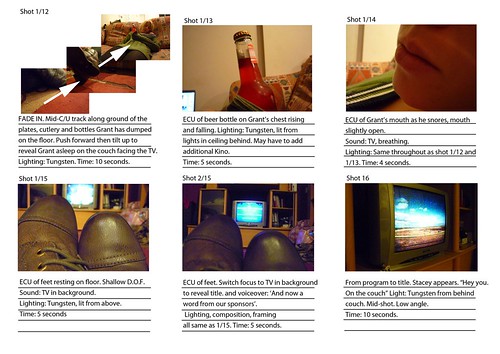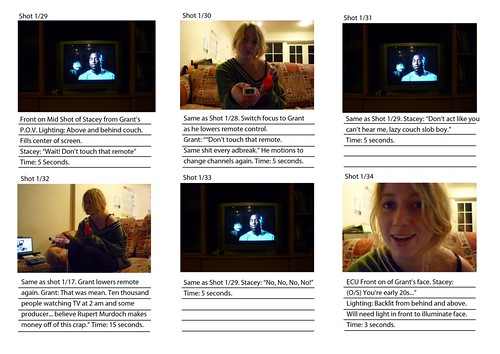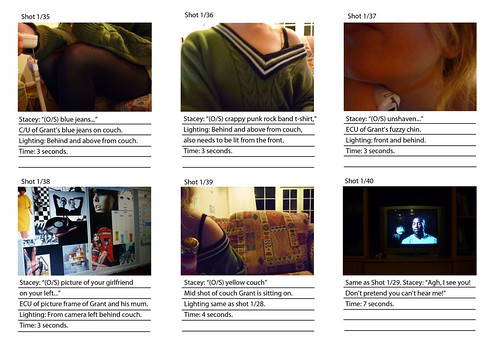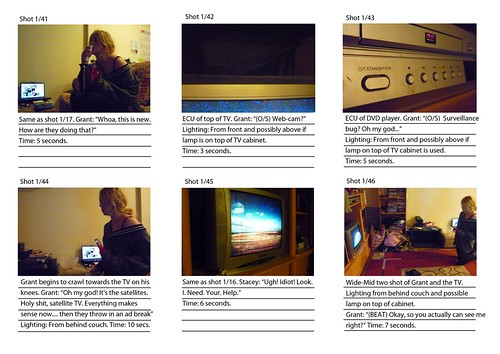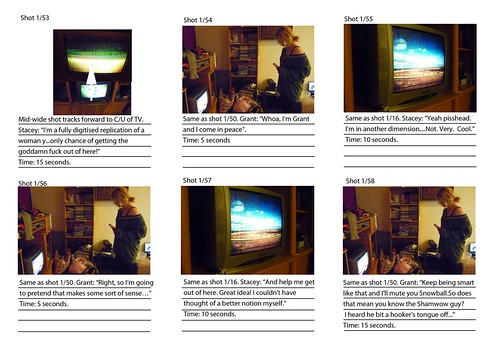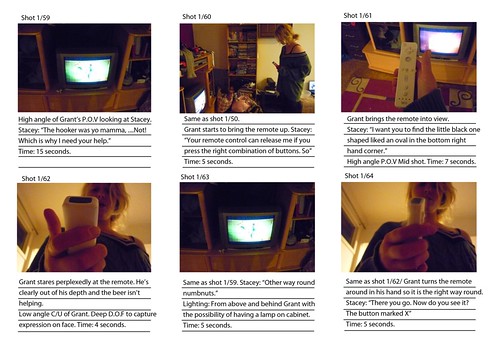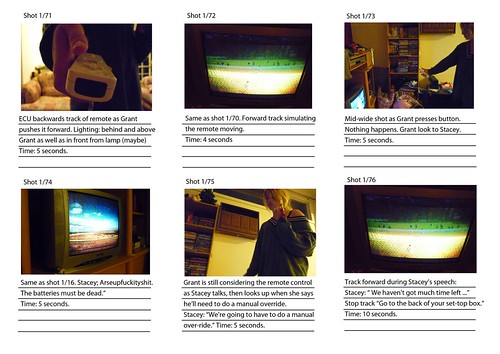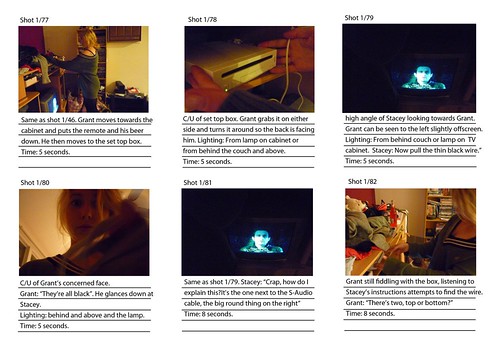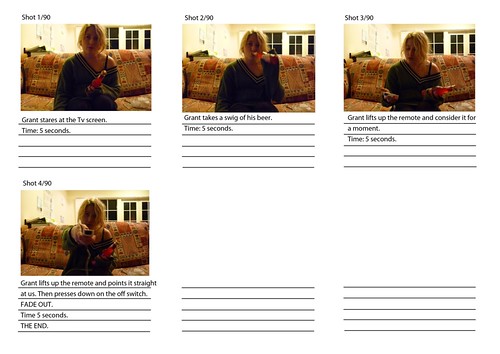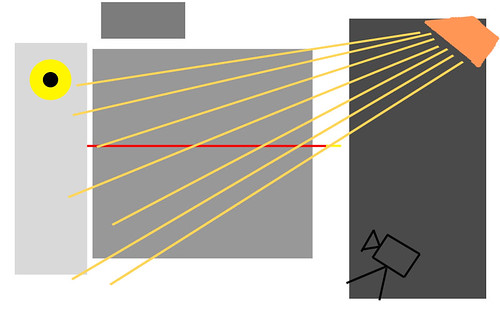The organisers of SKFF should be shot.
I have just watched over 70 of the 150 films that were shown this week and the last session was an absolute let-down! A film festival to me should be arranged in the same a film does. In a feature, the director holds back until the very last 30 minutes of the film where he or she has a very small amount of time to make their mark on you before you get up out of your chair. They want you to go around telling everyone about the fabulous experience you had watching that film and recommend it to all your friends. What you don't want or need is people leaving early or halfway through your film because they are bored/disgusted/incredulous/all of the above. The same goes for film festivals. That last session is a blueprint for next year's success for the festival and if you have an entire audience all agreeing that the final session wasn't worth the wait, well then SKFF have got a big problem on their hands for 2011.
I'll give them credit; they tried. But what I just couldn't understand was why out of all the films shown for the festival, including the 4 I've mentioned so far, would they put the worst ones on the end? Instead of discussing my favorite film of the night, I'm going to abuse the worst of the entire festival just because I feel like it. No Mr. Nice Guy over here.
One More Tonight is the story of Abdo, a Somalian refugee who makes his living driving cabs during Melbourne's harsh nights. Supporting his two sons and a wife, he must make the ultimate sacrifice in providing for the ones he loves by working or missing work to spend time with them. His annoyingly irate wife gets pissy if he's even an hour late from a 5am shift (why in the hell she would want to wait up till 4am when the kids have to be at school by 8am the next morning is beyond me in the first place) and locks him out of the house everytime he does it. Which for some bizarre reason is every night. As a result, he goes to crash on his brother's couch until the next day when he has to do it all again. The film doesn't really go anywhere from here other than to cycle through this repetitive sequence three times before the dull climax. As predicted, Abdo gets assaulted (an all too obvious comment on the recent spate of taxi driver assaults in the city lately) and dies right at the end of the scene with the film closing around shots of his devastated wife being told the news and the blonde bimbo from the command centre listening to Abdo's dying words in shock.
I'll admit, it's a sad story. But come on! How many times have we heard it for a start and secondly, if you're going to do it, at least try and do it well?! The acting was crap, totally superficial and almost Soapie; the camera work was boring and repepetive; the editing was utterly lazy with some shots obviously being held too long so that we see a smile creep through or a hand accidentally get in the way of the actor. All together, it was just...crap! I'm still absolutely dumbfounded as to how the damn thing got into the festival at all, let alone became the last film of the last session! Kimiko and I still have no idea why they put it in but I suppose they must have their reasons. To get my revenge, though, I did write "not worth rating" on my Inside Film awards slip so felt a little better about myself.
Other than that, I'm done at SKFF! Kimiko invited me to the closing awards for which she only had 2 tickets so I will write about that tomorrow.
I have just watched over 70 of the 150 films that were shown this week and the last session was an absolute let-down! A film festival to me should be arranged in the same a film does. In a feature, the director holds back until the very last 30 minutes of the film where he or she has a very small amount of time to make their mark on you before you get up out of your chair. They want you to go around telling everyone about the fabulous experience you had watching that film and recommend it to all your friends. What you don't want or need is people leaving early or halfway through your film because they are bored/disgusted/incredulous/all of the above. The same goes for film festivals. That last session is a blueprint for next year's success for the festival and if you have an entire audience all agreeing that the final session wasn't worth the wait, well then SKFF have got a big problem on their hands for 2011.
I'll give them credit; they tried. But what I just couldn't understand was why out of all the films shown for the festival, including the 4 I've mentioned so far, would they put the worst ones on the end? Instead of discussing my favorite film of the night, I'm going to abuse the worst of the entire festival just because I feel like it. No Mr. Nice Guy over here.
One More Tonight is the story of Abdo, a Somalian refugee who makes his living driving cabs during Melbourne's harsh nights. Supporting his two sons and a wife, he must make the ultimate sacrifice in providing for the ones he loves by working or missing work to spend time with them. His annoyingly irate wife gets pissy if he's even an hour late from a 5am shift (why in the hell she would want to wait up till 4am when the kids have to be at school by 8am the next morning is beyond me in the first place) and locks him out of the house everytime he does it. Which for some bizarre reason is every night. As a result, he goes to crash on his brother's couch until the next day when he has to do it all again. The film doesn't really go anywhere from here other than to cycle through this repetitive sequence three times before the dull climax. As predicted, Abdo gets assaulted (an all too obvious comment on the recent spate of taxi driver assaults in the city lately) and dies right at the end of the scene with the film closing around shots of his devastated wife being told the news and the blonde bimbo from the command centre listening to Abdo's dying words in shock.
I'll admit, it's a sad story. But come on! How many times have we heard it for a start and secondly, if you're going to do it, at least try and do it well?! The acting was crap, totally superficial and almost Soapie; the camera work was boring and repepetive; the editing was utterly lazy with some shots obviously being held too long so that we see a smile creep through or a hand accidentally get in the way of the actor. All together, it was just...crap! I'm still absolutely dumbfounded as to how the damn thing got into the festival at all, let alone became the last film of the last session! Kimiko and I still have no idea why they put it in but I suppose they must have their reasons. To get my revenge, though, I did write "not worth rating" on my Inside Film awards slip so felt a little better about myself.
Other than that, I'm done at SKFF! Kimiko invited me to the closing awards for which she only had 2 tickets so I will write about that tomorrow.




